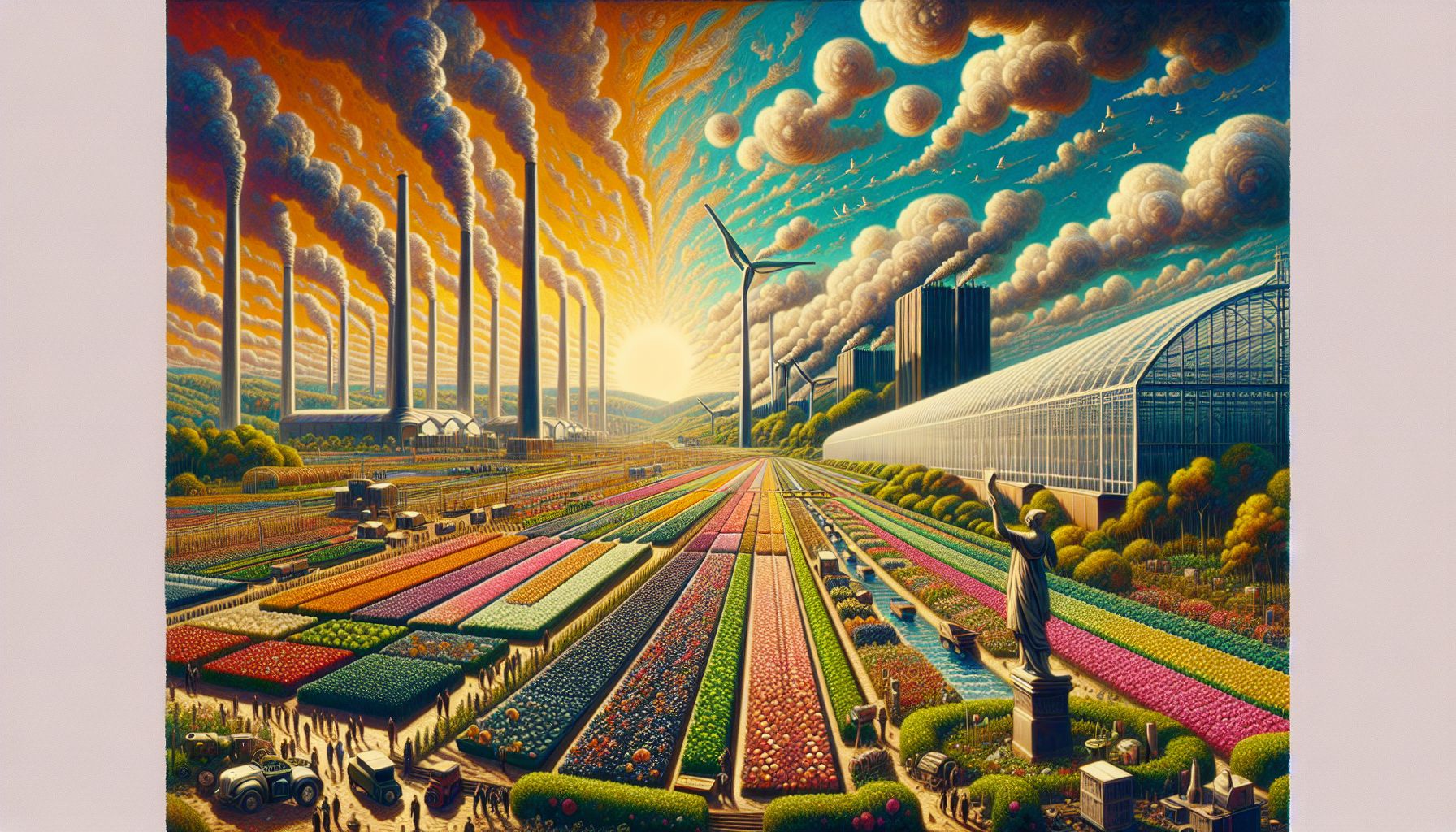Revolutionizing greenhouse horticulture with carbon capture in the Netherlands

The Netherlands harnesses carbon capture technology to sustainably reduce emissions in greenhouse horticulture, aiming for climate neutrality by 2040.
A Leap Towards Sustainability
The Netherlands is taking bold strides in the global effort to mitigate climate change through the utilization of carbon capture technology in its renowned greenhouse horticulture industry. This initiative not only embodies the Dutch commitment to environmental stewardship but also serves as a practical response to the European Union’s ambitious goal of achieving a 90% reduction in CO2 emissions by 2040[1].
Innovating for the Future
At the heart of this green innovation is the direct air capture (DAC) method, employed by Dutch startup ReCarbn. This technology uses large fans to draw air through filters, capturing CO2 with materials that react with the gas. ReCarbn’s innovative approach enhances efficiency by circulating the chemical sorbent between reactors, significantly reducing energy consumption when compared to conventional fixed-bed processes[1][2].
Research and Development
Wageningen University & Research (WUR) has established the Innovation and Demonstration Center (IDC) CO2 from Outdoor Air. This center is dedicated to testing the feasibility of carbon capture in greenhouses and will evaluate six different carbon capture systems until 2026. The focus lies on ensuring the CO2 quality is sufficient for plant growth, optimizing energy consumption, and integrating these systems effectively within the greenhouse environment[2].
The Economic Perspective
Klaas Knot, President of De Nederlandsche Bank, has underlined the urgency for innovation in greenhouse horticulture to reduce production costs. He controversially stated that greenhouse horticulture must disappear from the Netherlands unless it adapts to more sustainable practices. This highlights the economic imperative for the horticulture sector to evolve and maintain its competitiveness[1].
Challenges and Progress
While the benefits of DAC plants are clear, scaling up carbon capture technology in horticulture presents challenges in affordability and volume. However, the Porthos project in Rotterdam demonstrates the potential for large-scale industrial CO2 capture and storage under the North Sea, indicating the viability of carbon capture solutions for a range of applications beyond greenhouse horticulture[1].
Conclusion
With the Dutch horticulture sector’s pursuit of climate neutrality by 2040 through innovation and technological support, the Netherlands sets a precedence for global sustainability. The integration of carbon capture technology in greenhouse horticulture exemplifies a significant step towards a greener future, balancing economic viability with environmental responsibility.
Bronnen
- innovationorigins.com
- www.wur.nl
- www.ft.com
- www.iea.org
- www.growsave.co.uk
- www.verticalfarmdaily.com

